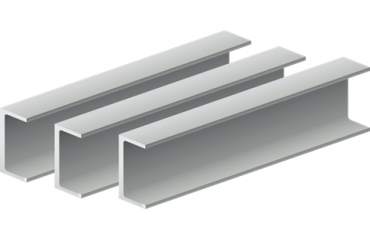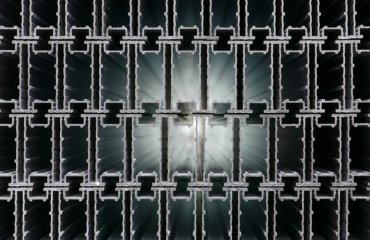The Process of Aluminium Extrusion Profiles
Aluminium profiles are fused and extruded to get different parts of aluminum. The manufacturing process of aluminium profiles mainly consists of 3 processes. They are;
– Casting
– Extrusion
– Coloring.
Among them, the colour primarily contains, electrophoretic coating, oxidation, powder spraying, fluorine carbon spraying, wood grain transfer and so on.
On this article, you will find information on how to manufacture aluminium extrusion profiles and what ground rules to take into account in their production process.
Aluminium extrusion shapes of aluminium is a method used to convert aluminium alloy into objects (Aluminium Extrusion die). With a definitive cross-sectional profile for a wide range of usages. The extrusion process makes most of aluminium’s original combination of physical characteristics. Its malleability lets it be readily machined and cast, and yet aluminum is one third the density and stiffness of steel so the resulting products present stability and strength, especially when alloyed with other metals.
Principles of The Process of Aluminium Extrusion Profiles
The process of aluminium extrusion profiles consists of the steps mentioned below:
– A cylindrical billet of aluminium alloy is heated to 800 °F – 925 °F, after designing and creating the shape of the die.
– Then, the aluminium billet is transferred to a loader, where a lubricant is added to prevent it from sticking to the extrusion machine. The handle or the ram.
– Strong pressure is applied to a dummy block with a ram, that pushes the aluminium billet into the container, forcing it through the die.
– For avoiding the formation of oxides, nitrogen in gaseous or liquid form is introduced and allowed to flow through the divisions of the die. This makes an inert atmosphere and rises the life of the die.
– The extruded portion passes onto a run-out table as an elongated part that’ now the same shape as the die opening. It’s then pulled to the cooling table where fans cool the newly made aluminium extrusion.
– After the cooling is finished, the extruded aluminium is moved to a stretcher, for straightening and work hardening.
– The hardened extrusions are cut according to the required lengths on the saw table.
– The last step is to treat the extrusions by heat in age ovens. which hardens the aluminium with speeding the aging process.
You read a short summary of the process of
aluminium extrusion profiles. Also, additional complexities can be applied during that process to further customize the extruded sections. For instance, to make hollow sections, pins or piercing mandrels are placed inside the die. After the extrusion process. A range of options is possible to adjust the color, texture, and brightness of the aluminum’s finish. This can include aluminum anodizing or painting.
Nowadays, aluminum extrusion is used for a large range of purposes, including components of the ISS (International Space Station). These various applications are possible due to the beneficial features of aluminum, from its particular blend of strength and ductility to its conductivity.
its non-magnetic features and its ability to be recycled again and again without loss of integrity. All kind of these abilities makes aluminum extrusion a viable and adaptable solution for an increasing number of manufacturing needs.
You can contact with us for your demands of aluminum extrusion profiles.




